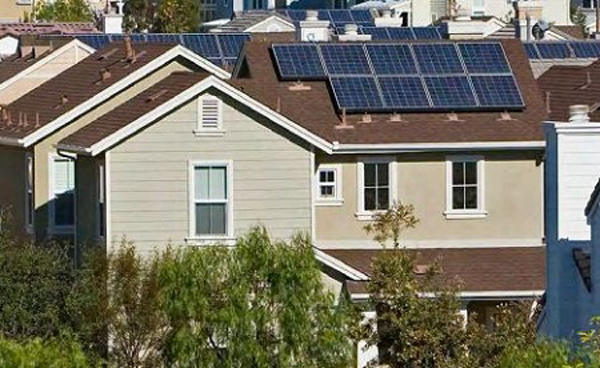
President Obama’s support for massive solar energy projects on public lands infuriates some dedicated environmentalists who insist the emphasis should be put on developing rooftop and other urban opportunities. But the U.S. Department of Energy’s SunShot Initiative provides a steady stream of evidence that the administration actually isn’t putting all its eggs into the centralized power station basket.
The latest reminder of this comes in the form of an announcement of a new round of funding – worth up to $12 million – for the Rooftop Solar Challenge. This is the program in which local and regional government teams compete for funds to help eliminate administrative barriers to residential and small commercial photovoltaic solar installations.
Tons of research has shown that market barriers and high non-hardware balance of system costs (also known as “soft costs”) are slowing down the spread of solar in the United States.
A 2011report from SunRun estimated that local permitting and inspection processes add 50 cents per watt, which doesn’t sound like much until you consider that translates to $2,500 for a typical 5-kilowatt home system.
Then just last week, Clean Power Finance reported that more than a third of solar installers avoid selling solar in “otherwise viable markets” because of permitting issues,” which not only limits adoption of solar in those markets, but tamps down competition, leading to higher prices.
With the Rootop Solar Challenge, the administration a year ago handed out grants to 22 teams, each of whom had its own scheme for attacking these issues – schemes like developing an online multiagency portal in New York City; or pruning local ordinances in Broward County, Fla.; or creating and then comparing unique pilot programs in five communicates Massachusetts.
With Rooftop Solar Challenge II, the DOE said it’s looking for teams that have “already demonstrated exceptional progress and success towards achieving soft cost reductions in a specific geographic area, and must present a credible plan to expand these successes by rapidly deploying techniques and tools to achieve a larger-scale impact.”
The DOE said it expects to divide the $12 million in funding between three to nine award winners, who must come up with at least one-fifth of the cost of the program themselves. Single awards for programs that impact wide geographical areas could be as high as $4 million, while programs aimed at the state or regional area are capped at $2 million, the DOE said.
No comments:
Post a Comment